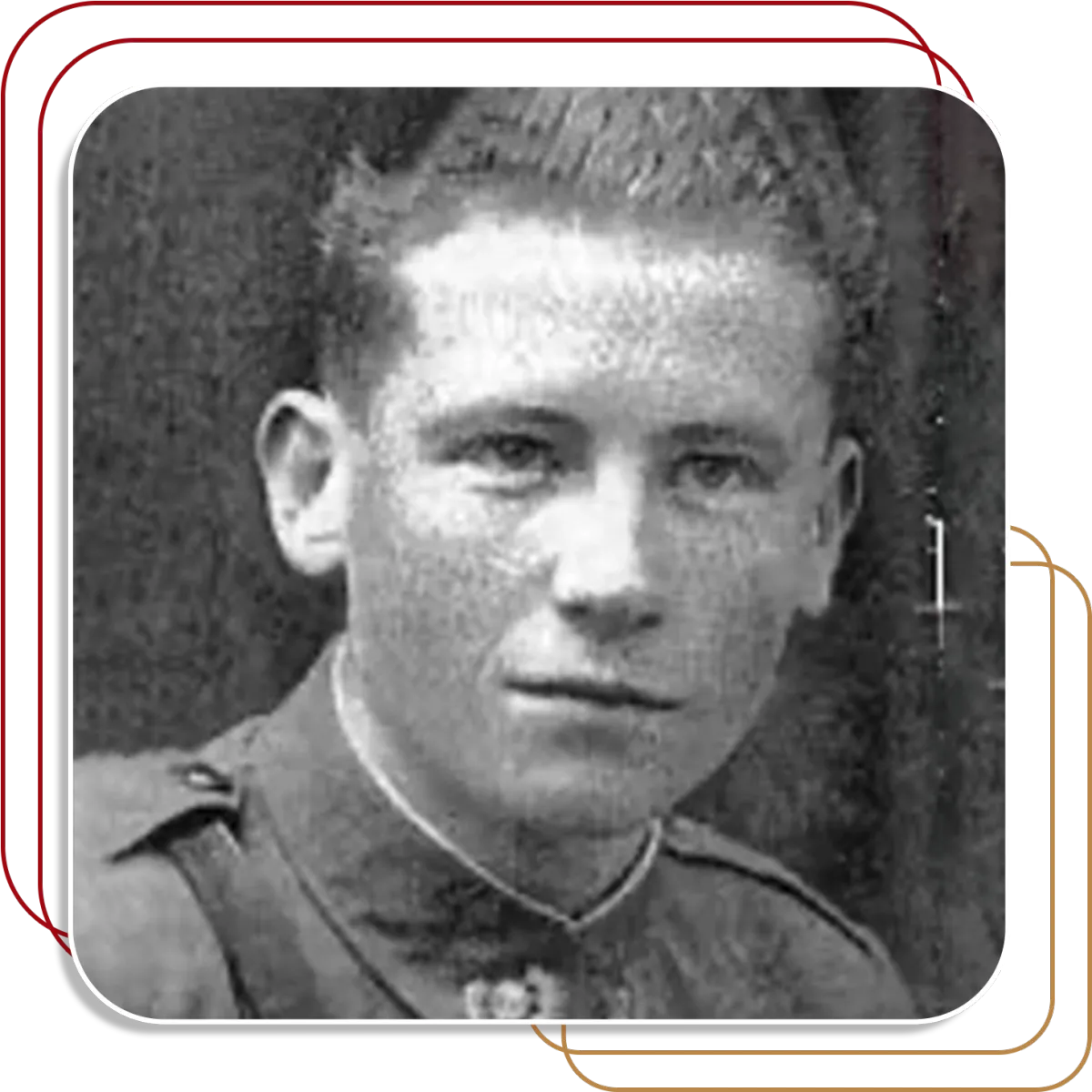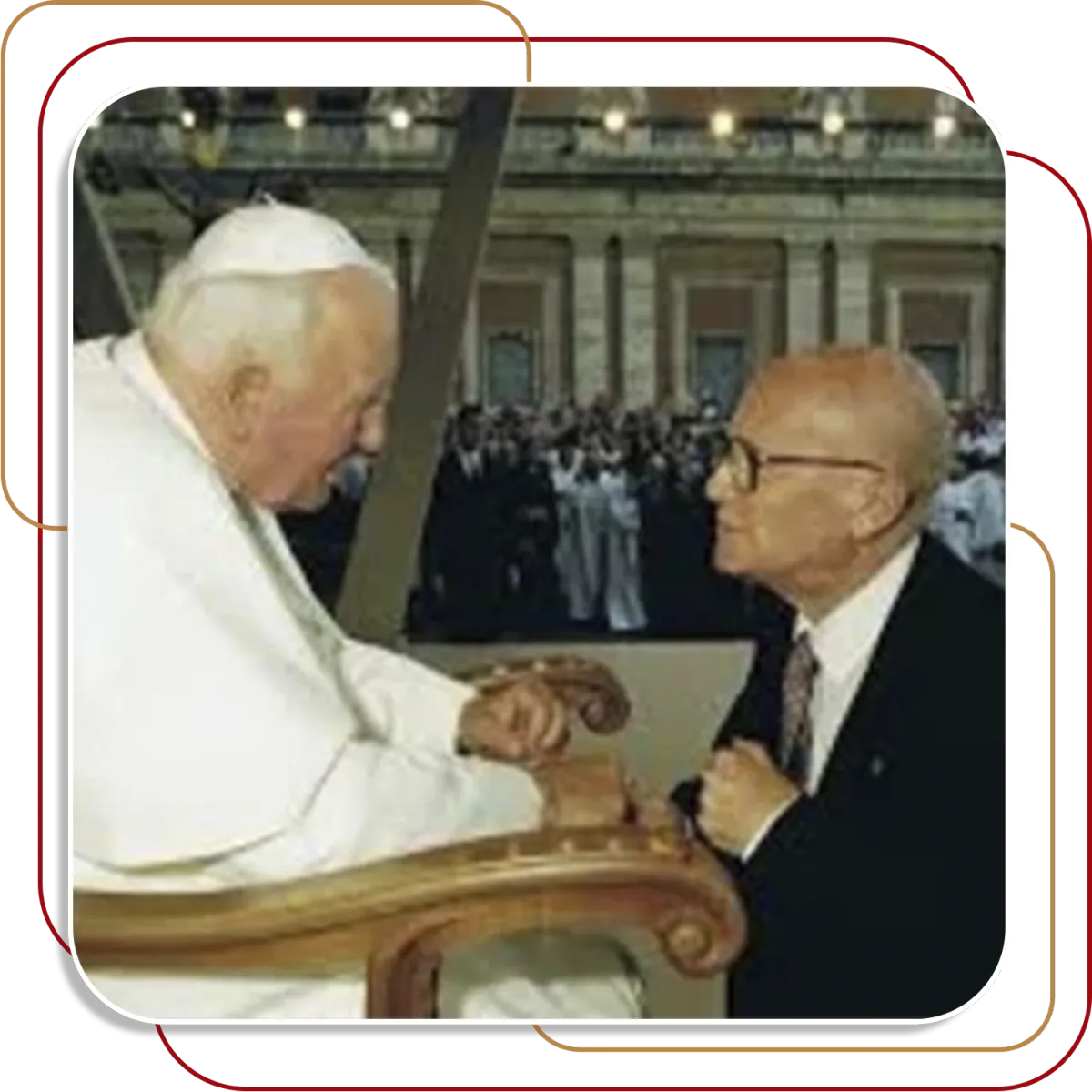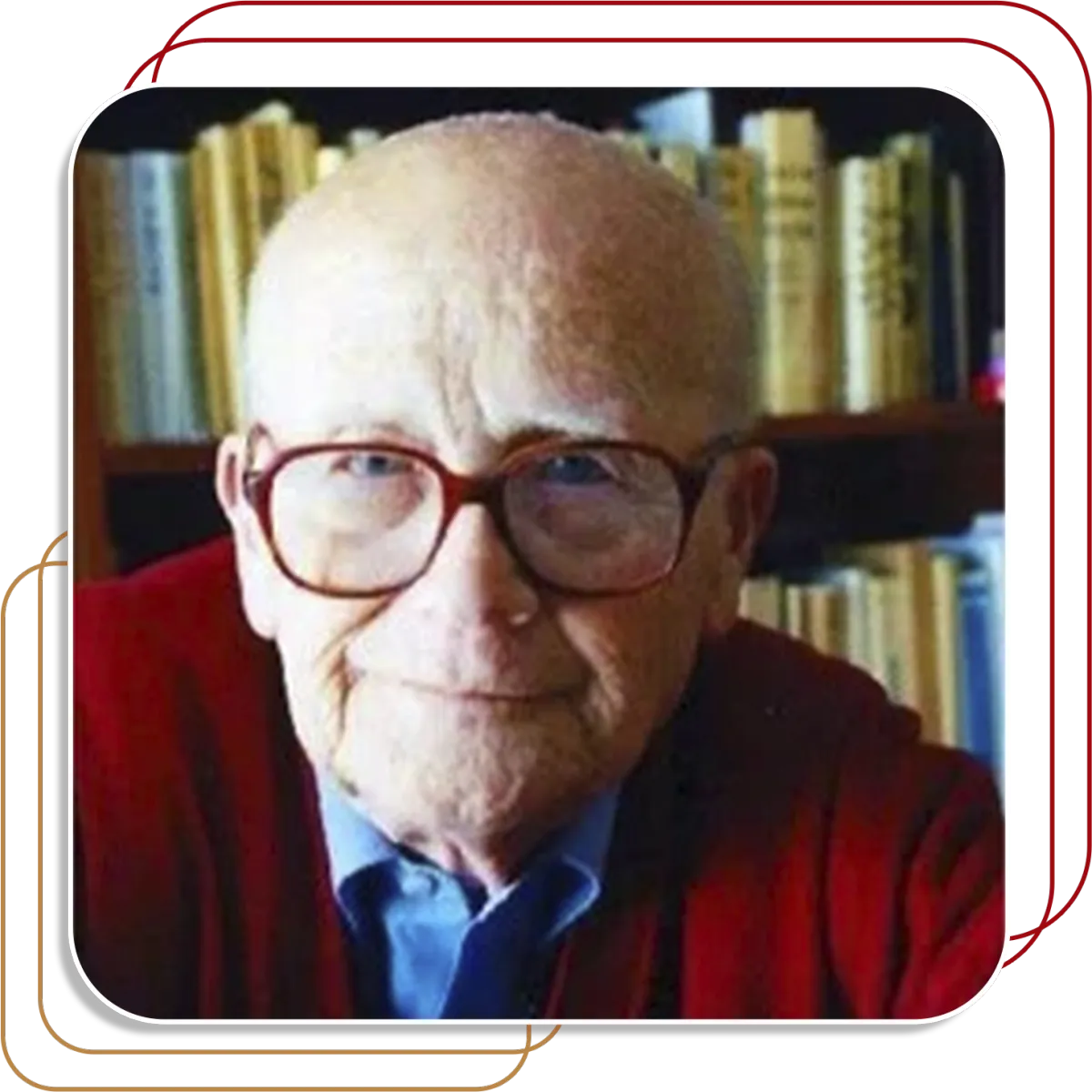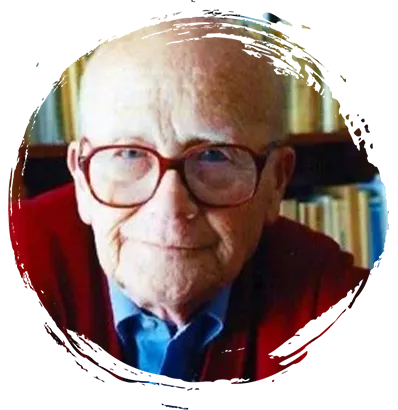History
Eduardo Bonnín Anguló
Founder of Cursillos in Christianity

1917
He was born on May 4, 1917 in Palma, Mallorca. He dedicated his life to the Cursillos. He served 9 years in the army. He never married. He loved to read. Intense religious and academic training. A restless young man with a great sense of leadership. Eduardo Bonnín Aguiló was, as he said, a "Christian Apprentice", he dedicated his life to announcing the love of God, valuing people and going beyond friendship. Eduardo dedicated his entire life to the Cursillo.
Father: Fernando Bonnín Piña
Mother: Mercedes Aguiló Forteza
2nd of 10 children - Brother became a Priest - Sister became a declared religious - Eduardo, Founder of Cursillos In Christianity.

1937-1946
Eduardo served 9 years in the Army.
Eduardo's travels Five Continents
The seed of the Cursillos spread throughout the world and Eduardo Bonnín traveled to insist on the Good News that God in Christ loves us and does so with an attitude of friendship towards all the people he met. Around the world, Eduardo participated in: Cursillos, Cursillos of Cursillos, Ultreyas, Meetings and conferences.

1937-1946
Eduardo served 9 years in the Army.
Eduardo's travels Five Continents
The seed of the Cursillos spread throughout the world and Eduardo Bonnín traveled to insist on the Good News that God in Christ loves us and does so with an attitude of friendship towards all the people he met. Around the world, Eduardo participated in: Cursillos, Cursillos of Cursillos, Ultreyas, Meetings and conferences.



▪ He was born on May 4, 1917 in Palma, Mallorca. ▪ He dedicated his life to the Cursillos. ▪ He served 9 years in the army. ▪ He never married. ▪ he He loved to read. ▪ Intense religious and academic training. ▪ A restless young man with a great sense of leadership. Eduardo Bonnín Aguiló was, as he said, a "Christian apprentice", he dedicated his life to announcing the love of God, valuing people and going beyond friendship. Eduardo dedicated his entire life to the Cursillo.
▪ Father: Fernando Bonnín Piña ▪ Mother: Mercedes Aguiló Forteza
▪ 2nd of 10 children ▪ Brother became a Priest ▪ Sister became a declared religious ▪ Eduardo, Founder of Cursillos In Christianity.
▪ 1937-1946 Eduardo served 9 years in the Army. ▪ Eduardo realized that the men in the barracks had no knowledge of doctrine. ▪ He considered that these men were “far away” from Christ and his Church. ▪ Eduardo understood the urgency of letting men know, through friendship, that God loved them. From what he observed, lived, learned and his concern for the person and friendship, Eduardo saw in this experience of the barracks an opportunity: the importance of carrying the message that "God loves us", especially to those far away, to those " others", to the unbelievers, to the indifferent.
▪ Eduardo's travels Five Continents ▪ 1961 –United States ▪ 1966 –Brazil ▪ 1968 –Columbia ▪ 1971 –Austria ▪ 1972 –South Korea (3) ▪ 1976 –Germany ▪ 1978 –Costa Rica ▪ 1995 –Ecuador ▪ 199 6 –El Salvador ▪ 1997 – Angola ▪ 1981 –Argentina ▪ 1988 –Chile ▪ 1991 –Australia ▪ 1992 –Canada (7) ▪ 1998 –Bolivia and China A complete list of Eduardo's travels is found in the book 100 Years: Biography and Mentality. The seed of the Cursillos spread throughout the world and Eduardo Bonnín traveled to insist on the Good News that God in Christ loves us and does so with an attitude of friendship towards all the people he met. Around the world, Eduardo participated in: Cursillos, Cursillos of Cursillos, Ultreyas, Meetings and conferences.
▪ The meetings with the Popes were undoubtedly very important moments in Edward's life. Eduardo emanated joy from his pores, like a child who lets all the joy from his soul overflow.▪ 1985–Eduardo met with Pope John Paul II during the Italian National Ultreya.▪ 2000-Eduardo meets with Pope John Paul II.▪ 2006-Eduardo meets with Pope Benedict XVI during the assembly of the Pontifical Council for the Laity.After a lifetime dedicated to the love of God and people, always being happy, but not satisfied, as he said.
▪ 2008 February 6 Eduardo dies, he was buried in the Capuchins church and on his tomb says what he always said he was: “An Apprentice of a Christian”.
Beautification Process
Prayer Card
Oh Lord, provider of all Graces and Blessings. You granted your servant EDUARDO BONNÍN AGUILÓ the grace of dedicating his whole life with humility and generosity to the work of the CURSILLOS IN CHRISTIANITY MOVEMENT. Journeying through five continents proclaiming that God in Christ loves us. Grant us through his intercession the favor we implore of You.
(Name the favor being requested)
Grant us the grace of his beatification for Your most highest glory and the good of Your Church that shines throughout the life of Your Saints.
Through Jesus Christ our Lord. Amen.
( Followed by the Our Father.)
To move forward with the cause of beatification of Eduardo Bonnin Aguiló, postulator D. Gabriel Ramis has reported that testimonies of possible miracles are needed.
From the Eduardo Bonnín Aguiló Foundation we want to inform you and offer you the possibility of contributing your testimony about the holiness of Eduardo Bonnín. For this reason, we provide you with an address for anyone who wants to send his personal testimony, duly dated and signed in his handwriting, regarding any daily miracle or great miracle when intercession has been requested from the Servant of God, Eduardo Bonnín Aguiló.
Data that must be included:
- Date
- Name and surname
- Identification document
– Diocese
– Postal address
- Phone
– Handwritten signature
Send the testimony by letter to:
D. GABRIEL RAMIS
CHURCH HOUSE
DELEGATION CAUSE OF SAINTS
SEMINARIO STREET N°4
07001 – PALMA DE MALLORCA
BALEARIC ISLANDS – SPAIN
And send a scanned copy by email: [email protected]
1940
Speech by Pope Pius XII ▪ This speech highlighted the 3 principles that guided the basic ideas of thought in Edward's life: ✓ Christ ✓ Person ✓ Friendship ▪
“H. H. Pius side, of the faithful population and particularly of its most elected members, from which it can extract the elements to promote Catholic action; and on the other, from the groups that have distanced themselves from the practice of Christian life. These too are parish sheep, lost sheep; and also of them, and of them in particular, you are responsible guardians, your most beloved children; and as good shepherds you must not shy away from work or effort to seek them, win them again, or give them rest, until everyone finds life, life and joy, in the middle of the altar of Jesus Christ.”
(Address to the parish and the President of the Neighborhood in Rome, February 6, 1940).
1943
This speech inspired Eduardo to examine people groups in the Church and the world. After this, he wrote the “Study of the Environment” rollo. ▪ All the rollos of Cursillo were based on this study.
Eduardo attended a week-long Catholic Action Cursillo and later served as its president. ▪ Pope Pius XI created Catholic Action. The Catholic Action Cursillos lasted a week in a very pious environment, which according to Eduardo gave little importance to human interaction and had a boring atmosphere. The message was good, but the messengers seemed bored. ▪ After what Eduardo heard and observed at the Cursillo, he selected what could be applied to his concerns. ▪ From this, Eduardo began to write outlines on index cards and developed a "new method” which would later be called "Cursillos in Christianity".
1944
The first Cursillo was known as the Cala Figuera Cursillo, from August 19 to 22, 1944. ▪ The Cursillo was held in a small chalet. ▪ 14 candidates ▪ Rector: Eduardo Bonnín ▪ 1 Priest ▪ 2 Leaders “This was the first “Three Day Course”, and although we called it “Pilgrim Leaders Course”, because they would not have allowed us to do it under another name. They were not like those [Catholic Action] with the same name that had been had in Mallorca until then.”.
1947
P. Juan Hervás was appointed auxiliary bishop of Mallorca. ▪ Bishop Hervás did not experience a Cursillo Weekend, but he did experience the fruits of it in men.
1948
First edition. The Guide is published in different languages. ▪ The Apostolic Hour in the Pilgrim's Guide is a moment of audience with Christ. ▪ Pilgrims praying with pilgrims. ▪ Basic prayer book designed with the “distant” person in mind. Eduardo Bonnín tells us that the authorship of the “Pilgrim's Guide” corresponds to Father Sebastián Gayá. He gave himself body and soul to the Guide and the Apostolic Hour.
1949
Cursillo No. 1 was held from January 7 to 10, 1949 in San Honorato, Mallorca. ▪ 21 Candidates ▪ 1 Priest ▪ Rector: Eduardo Bonnín ▪ 4 Leaders ▪ Fr. Juan Capó led the Retreat phase. ▪ To remember this Cursillo, a plaque was placed in San Honorato.It seems appropriate to point out that until 1949 a Cursillo was held every year. Starting with this 1949 Cursillo, it can be said that the Cursillos “began to gain strength,” since since then several were held each month. That year there were 20 Cursillos. This was one of the reasons why the need to number was considered, because referring to the Cursillos began to be confusing.
1949-The song “De Colores” is introduced in Cursillo. ▪ Eduardo realized that things were not going well in one of the Cursillos. ▪ Guillermo Estalleres sang the popular song in Spain: De Colores. The Cursillo took a turn. ▪ The name De Colores became a “greeting” among Cursillistas, that is, being in a state of grace. One of Eduardo's ideas was to look for songs that were not pious, but rather traditional, so that in moments of rest or uncertainty in the Cursillo, they could sing and encourage the Cursillistas. The DeColores song and greeting is still used worldwide in the Cursillos of Christianity and has become the anthem, although the Cursillo Movement has never recognized it, but the truth is that it identifies the Cursillo family throughout the world.
This same year, the Group Meeting emerged to enable the continuous triple encounter with oneself, with Christ and with others. ▪ The Group is the “personal” dimension of the Cursillo. ▪ Destined to follow up on the Cursillo, a fundamental part of the Post-Cursillo. ▪ Some opposition from clergy because lay people meet without the presence of a priest.
The increase in cursillistas in 1949 led Eduardo to reflect deeply so that this influx of a large number of cursillistas did not hinder the friendship groups that Eduardo already considered in 1944 as the most essential of the Post Cursillo. Father Juan Capó compiled and published a book titled Group Meeting, Theory and Practice, using Eduardo's writings.
Ultreya is a word used by pilgrims on “the way” to the Cathedral of Santiago in Compostela. ▪ Ultreya! Forward! We almost arrive! ▪ Ultreya is the Meeting of the Group Meetings. ▪ The Ultreya is the “social” dimension of the Cursillo. ▪ Ultreya allows the best of each person to reach the greatest possible number. The emergence of the Cursillos and the enthusiasm and friendship they experienced could not be left alone in the intimate and personal dimension. The Cursillistas gathered [in Ultreya] to share “everyone with everyone” the wonders that the Lord was doing in them.
1952
It was marked with a “special blessing” for the Cursillo by the bishop of Mallorca Mons. Juan Hervás. Where Eduardo “I publicly asked Bishop Hervás if he would pronounce his approval or disapproval [of the Cursillo]. He told him: “If you tell us to stop, we will; and if you tell us to continue, we will continue.” He asked three times so that everyone present could take note. Then Bishop Hervás stood up and said: “I bless Cursillos of Christianity not with one hand, but with both.”
1955
Bishop Hervás is transferred from the Diocese of Mallorca to the Diocese of Ciudad Real. Bishop He was replaced by Bishop Enciso Lara who was appointed bishop of Mallorca.
1956
Bishop Enciso wrote a “Pastoral Letter on Cursillos” and suspended all activities of the Cursillo Movement in Mallorca. He did not want Cursillos in his diocese. This pastoral letter “shook” Eduardo, the cursillista family and religious of Mallorca. Eduardo spent almost ten years in the desert, from May 1955 to September 1964.
1957
Monsignor Hervás publishes The Cursillos of Christianity, Instrument of Christian Renewal from Ciudad Real. ▪ This was the reason why Mons. Hervás became considered “Bishop of the Cursillos”. ▪ “The most complete treatise on our movement that had been prepared up to that time” (CHM). ▪ Some say it is the longest Pastoral Letter ever written.
“In 1957 there was a good time for Eduardo Bonnín. While his life was deprived of freedom, with regard to his apostolic activity in the Cursillos, and in a certain way to his public life, an event in Ciudad Real, where Mons. Juan Hervás had been transferred, promoted the activity of Cursillos. to take new flights, even outside of Mallorca. Eduardo traveled to the peninsula several times. “The desert became a catalyst.”
That same year Eduardo felt the need to design something for the leaders and potential leaders of the Cursillo Movement. ▪ The Cursillo of Cursillos was designed by Eduardo and his friends. ▪ The first Cursillo de Cursillos was held in Madrid in 1957. “In the 'ideas laboratory' (office) of Bonnín, we prepared all the initial guidelines of the Cursillo de Cursillos. Two versions were written, one for two days and the other for three days (both with an introductory night) to adapt to the time available in each location.”
Also that same year Cursillos arrived in the United States. ▪ The first Cursillo in Spanish was held in Waco, TX in May 1957. ▪ Bernardo Vadell and Agustín Palomino, two young Spanish aviators, arrived in Texas. They were stationed at the Air Force Base in Laredo, Texas. They and Fr. Gabriel Fernández held the first Cursillo.1961-The first Cursillo in English was held in San Angelo, TX.
1958
Cursillos for Women ▪ From the beginning, Eduardo felt that the Cursillos had to be open to men and women. ▪ May 1958–The First Women's Cursillo was held in Tarragona, Spain. ▪ The priests could not be in the photos with the women who lived the Cursillo and they could not eat at the same table. “From the beginning we requested Cursillos for women and suffered denials.” “Thank goodness that by the grace of God it was possible for a woman to speak with the Cardinal of Tarragona, and that made it possible to have Cursillos for Women.”
1959
Eduardo y sus amigos aprovecharon la falta de actividad de los Cursillos para estudiar en profundidad y reflexionar. ▪ Era el momento adecuado para poner por escrito todo lo que se pretendía con los Cursillos. ▪ La Estructura de Ideas tuvo una aceptación entusiasta. “Escribimos Estructura de Ideas en 1959. Fue un momento muy difícil en la historia de los Cursillos, en el que se discutió la validez de prácticamente cada pieza y las ideas básicas del Movimiento”.
Leaders Manual ▪ Eduardo gathered all the Cursillo outlines and sent them to Bishop Juan Hervás at his request. ▪
1962
Bishop Hervás and his collaborators publish the Leaders Manual. “We have always believed that one of the greatest potential benefits of our movement is helping Christians move from the level of rules to the level of criteria in their lives. The Leaders Manual was expressly designed to instill just the opposite. The Cursillos, in their methodology, went from criteria to adherence to norms. Cursillo was locked into a set of rules that could threaten the basic spirit of the Movement.”
On the five continents there is evidence of the ferment that this seed has produced.
